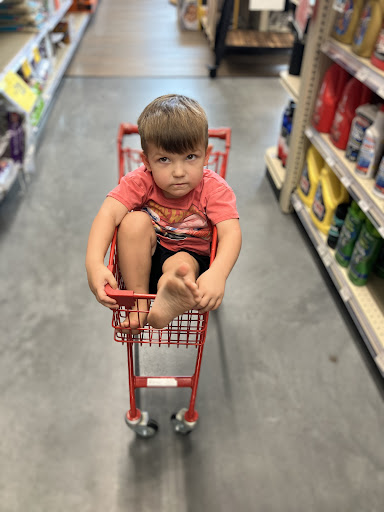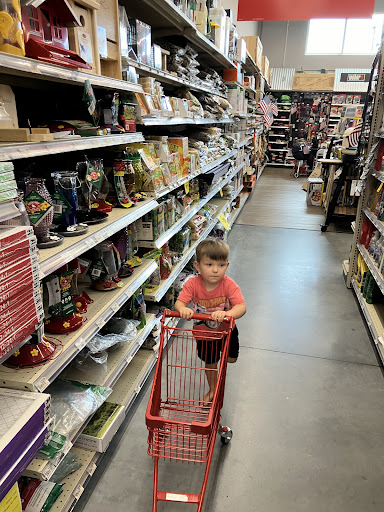Breathe New Life into Your Pneumatic Grinder
When your trusty pneumatic tool starts losing power or making strange noises, air grinder repair can save you money and extend your tool’s life significantly. Here’s what you need to know:
Most Common Air Grinder Problems:
- Worn bearings – causing wobble and noise
- Damaged rotor vanes – leading to power loss
- Moisture damage – from contaminated air supply
- Seized spindle – preventing rotation
- Clogged air passages – reducing performance
Quick Fix Assessment:
- Can you turn the spindle by hand? If not, it’s likely seized
- Does it start but stall easily? Check for worn vanes
- Hearing grinding sounds? Bearings probably need replacement
- Low power despite good air pressure? Clean and lubricate internals
Most air grinder issues stem from lack of proper lubrication and moisture in air lines. The good news? Many problems are fixable with basic tools and some patience. Research shows that with proper maintenance, a pneumatic grinder can last for many years, with repairs extending its usable life by similar durations.
Cost-effectiveness matters too. While some users consider cheaper die grinders “disposable,” quality tools are definitely worth repairing. A typical repair is often much less expensive than buying new.
The helpful team at Lowcountry Ace has extensive experience guiding customers through tool maintenance and repair projects, helping DIY enthusiasts save money while keeping their pneumatic tools running smoothly. We’veseen countless grinders brought back to life with the right approach and quality parts.
Must-know air grinder repair terms:
Diagnosis and Preparation: Before You Begin
Before diving into air grinder repair, it’s crucial to diagnose the problem correctly and prepare safely. A good diagnosis saves time and ensures you tackle the right issue from the start.
Common Issues Requiring Air Grinder Repair
Understanding the tell-tale signs of common problems will guide your air grinder repair efforts.
-
Lack of Lubrication: Daily oiling is essential. Without it, friction wears out internal parts like rotor vanes and bearings, leading to a sluggish or seized tool. If your grinder is slow or sticky, it likely needs oil.
-
Moisture in Air Lines: Water from compressed air causes rust and gums up internal parts, leading to jamming and poor performance. Bearings are particularly vulnerable. Rust or sluggishness often points to water damage.
-
Worn Bearings: Bearings enable high-speed, smooth spinning. Lack of lubrication and moisture causes them to wear out. Signs include excessive noise (grinding, squealing), vibration, or a wobbly spindle. If the shaft feels gritty or has play when spun by hand, the bearings likely need replacement.
-
Worn Rotor Vanes (or Blades): Rotor vanes convert air pressure into power. They wear down from friction, especially without oil. Worn vanes create a poor seal, causing power loss and stalling under load. This is a common cause of reduced performance.
-
Seized Spindle: A seized spindle won’t turn by hand. This indicates a major failure, such as a destroyed bearing, internal jam, or severe rust. This repair typically requires a full teardown.
-
Loss of Power or Stalling: This is a symptom of many issues, including worn vanes, gunked-up internals, or insufficient airflow. If the tool lacks power or stalls easily, its motor isn’t working efficiently.
-
Clogged Air Passages: Dirt, old oil, and rust can clog air passages, blocking airflow and reducing power. Cleaning these passages can often restore performance.
Essential Safety and Tool Checklist
Before you begin any air grinder repair, safety must be your top priority. Air tools are powerful, so take precautions even when disconnected.
Safety First!
- Disconnect Air Supply: Always disconnect the air hose from the tool before attempting any work to prevent accidental startups.
- Wear PPE: Put on your safety glasses to protect from flying debris or springs. Gloves are also smart to protect your hands from grime and sharp edges.
- Clean Workspace: Work in a well-lit, clean area to prevent losing small parts and reduce the risk of accidents.
For a comprehensive guide on general tool safety, we recommend checking resources like OSHA’s safety recommendations for angle grinders, as many principles apply.
Tools You’ll Need:
Gathering these essential tools beforehand will make the air grinder repair process much smoother.
- Wrenches: An open-end or adjustable wrench set for removing collets and other threaded parts.
- Vise: A bench vise to hold the grinder securely. Use soft jaws and don’t overtighten.
- Bearing Puller (or small pry tools): Invaluable for carefully removing press-fit bearings without causing damage.
- Snap Ring Pliers: The correct size pliers for internal and external snap rings will save a lot of frustration.
- Cleaning Solvent: Brake cleaner or kerosene is key for cleaning internal components. Brake cleaner evaporates quickly, leaving no residue.
- Air Tool Oil: Essential for re-lubricating all internal parts. Only use oil specifically designed for air tools.
- Small Screwdrivers/Picks: Perfect for prying small seals or cleaning out stubborn gunk.
- Soft Mallet or Rubber Hammer: Allows for gentle tapping to loosen stuck parts or seat components without causing damage.
For all these tools and more, the helpful team at Lowcountry Ace is your local expert. We’ve got everything you need to stock your workbench. Check out our guide on The Best Tools for Home Improvement to ensure you’re well-equipped.
Your Step-by-Step Guide to Air Grinder Repair
Now that we’ve covered diagnosis and safety, let’s get to the actual air grinder repair process. While models vary, the general steps for disassembly, replacement, and reassembly are consistent.
General Disassembly Procedure
Disassembly can be tricky due to compact designs. Patience and a gentle touch are key. Taking photos at each step can be a lifesaver during reassembly!
- Remove the Collet: Unscrew the collet nut and remove the collet from the front of the grinder.
- Locate and Remove Lock Rings/Housings: Carefully unscrew any front lock rings or threaded housing sections that secure the motor assembly.
- Separate the Motor Assembly: The motor assembly is often a tight fit. Here are a few methods to remove it:
- Vise Method: If the spindle shaft extends out, gently clamp it in a vise (with soft jaws!) and pull the housing away.
- Gentle Tapping: Tap the grinder’s body on a padded block to encourage the motor assembly to slide forward.
- Prying: Use a small pry bar on both sides to carefully and evenly pry the housing straight back.
- Air Blast Trick: Briefly attach the air line with a rag held over the front of the tool. The air blast can eject the motor assembly. Be ready to catch it!
- Triggering (with caution): With the lock ring removed, briefly triggering the grinder while tapping the case can help the motor slide out. Use extreme caution.
Replacing Worn Bearings and Rotor Vanes
These two components are the most common culprits behind a failing air grinder.
Replacing Worn Bearings:
If your diagnosis pointed to noisy, wobbly, or gritty bearings, it’s time for a replacement.
- Signs of Bad Bearings: A gritty feel when spinning the shaft, noticeable wobble or play, and grinding or squealing noises during operation.
- The Process:
- With the motor assembly out, identify the front and rear bearings.
- Carefully remove any snap rings holding the bearings in place.
- Use a bearing puller or small pry tools to gently remove the bearings. Work evenly to avoid damaging the shaft or bearing seats.
- Clean the bearing seats thoroughly.
- Press or tap the new bearings into place until they are seated snugly.
Replacing Worn Rotor Vanes:
Worn vanes cause power loss and stalling. They are often replaceable.
- Signs of Worn Vanes: Significant power loss, stalling easily under load, or slow startup.
- The Process:
- Carefully slide the rotor out of its cylinder.
- Slide the old, worn vanes out of their slots on the rotor, observing their orientation.
- Clean the rotor and cylinder thoroughly with cleaning solvent.
- Insert the new vanes into the rotor slots, ensuring they are oriented correctly (check for a chamfer or curve). These vanes are designed to expand and seal against the cylinder wall.
- Lubricate the new vanes and rotor assembly generously with air tool oil before reassembly.
Reassembly and Final Checks
Reassembly is the reverse of disassembly and requires attention to detail.
- Lubricate Internal Parts: Before reassembly, apply fresh air tool oil to all moving parts, especially bearings, rotor, and vanes.
- Reassemble in Reverse Order: Slide the motor assembly back into the housing, ensuring all components are correctly aligned and seated.
- Secure Lock Rings/Housings: Reinstall and tighten any lock rings or housing sections securely.
- Install Collet: Reattach the collet and collet nut.
- Check for Smooth Rotation: Before connecting air, spin the spindle by hand. It should rotate smoothly. If it feels stiff, disassemble and check for misalignment.
- Test with Air: Connect the air supply, starting with low pressure. Listen for unusual noises or leaks. The grinder should spin up quickly and powerfully.
Proactive Maintenance: The Key to Longevity
While repairing an air grinder is a great skill, preventing breakdowns is even better. Proper maintenance is the key to keeping your pneumatic tools running smoothly for years and is the lifeline for your valuable equipment.
The Importance of Lubrication and Air Quality
Poor lubrication and dirty air are the root cause of most common air tool problems, from worn bearings to gummed-up internals.
First, daily oiling is the golden rule. Before each use, add a few drops of high-quality air tool oil into the air inlet. This oil lubricates moving parts, prevents rust, and displaces moisture. Always use oil made specifically for air tools, as other lubricants can gum up or damage internal seals.
Next, dry compressed air is critical. Moisture in your air lines is a silent killer for air tools, causing rust, washing away lubrication, and leading to parts jamming. To combat moisture, prevention is key. An in-line air filter/water trap installed before your air hose is a great first step. If a tool gets wet, ensure it’s completely dry before storage.
Proactive Care to Avoid Future Air Grinder Repair
Beyond daily oiling and ensuring dry air, a few other habits can significantly extend your air grinder’s life and help you avoid costly air grinder repair.
-
In-line filters and water traps are your best defense against moisture and debris from your air compressor. Installing them close to the tool offers the best protection.
-
Use the correct air pressure (PSI) and air volume (CFM). Air grinders are hungry tools. Running one with an undersized compressor or restricted air lines puts extra stress on internal parts, causing premature wear. Always check your grinder’s manual for its recommended PSI and CFM.
-
Proper storage also plays a big part. Keep your air grinder in a clean, dry place. A dedicated tool chest is an excellent investment for protecting your equipment. If you’re looking for the perfect spot to keep your tools safe, the helpful team at Lowcountry Ace can help. Explore options in our guide: Find the Perfect Tool Chest at Lowcountry Ace.
-
Finally, perform regular cleaning. Periodically clean the exterior to prevent grime from getting inside. For a deeper clean, a flush with brake cleaner or kerosene (always followed by fresh air tool oil!) can remove residue and keep air passages clear.
Frequently Asked Questions
We often hear similar questions from our customers about their air grinders. Let’s tackle some of the most common ones.
When is it better to replace my air grinder instead of repairing it?
Deciding whether to repair or replace depends on a few factors:
-
Cost-Effectiveness: If the cost of parts and labor approaches or exceeds the price of a new, similar tool, replacement often makes more sense. While some cheaper models can seem “disposable,” higher-quality, professional tools are almost always worth fixing.
-
Part Availability: For very old or uncommon tools, finding the right replacement parts can be difficult or expensive. If a core component like the housing is cracked or the motor is completely seized beyond a simple fix, the cost and effort of air grinder repair may not be worthwhile. However, a worn bearing or vane is usually a straightforward and affordable fix.
Weigh the repair cost against the price of a new tool. If a few dollars for a new part can bring your trusty grinder back to life, that’s usually a clear win!
Why does my grinder stall easily even with good air pressure?
Stalling with good air pressure usually points to one of these common issues:
-
Worn Rotor Vanes: This is the most frequent cause. As vanes wear down, they can’t create a good seal, leading to power loss and stalling under load. Replacing them often solves the problem.
-
Gummed-Up Internals: Old, sludgy oil or moisture can make internal parts sticky, slowing them down. A thorough cleaning and fresh lubrication can restore smooth operation.
-
Insufficient Air Volume (CFM): Your grinder needs enough air volume (CFM), not just pressure (PSI). An undersized compressor or restrictive air lines (narrow hoses, long hoses, quick-connects) can starve the tool of air, causing it to struggle.
-
Kinked Hose or Closed Valve: It’s a simple check, but ensure your air hose isn’t kinked and all inline valves are fully open.
-
Speed Adjuster Setting: Some grinders have a speed dial; check that it hasn’t been turned down too low.
Where can I find the right replacement parts?
Finding the correct parts is key to a successful air grinder repair. Here’s where to look:
-
Tool Manual: Your manual should have an exploded diagram with part numbers. Always use these numbers when searching.
-
Manufacturer Websites: Most major tool brands have websites with parts diagrams and online stores for genuine OEM parts. This is the most reliable place to start.
-
Specialized Online Part Suppliers: Numerous online suppliers stock components for a wide range of brands. A search for your grinder’s brand, model, and “parts” will usually yield good results. They often sell convenient repair kits.
While we at Lowcountry Ace might not stock every internal component for every model, we carry a wide array of general repair supplies like cleaning solvents, air tool oil, and the essential tools you’ll need for your air grinder repair project. Our helpful team at Ace Hardware Tools James Island is always ready to guide you to the right supplies to get your grinder back in action!
Conclusion: Keep Your Tools Running Like New
Well, there you have it! Bringing a struggling air grinder back to life through air grinder repair is incredibly satisfying, isn’t it? It’s more than just fixing a tool; it’s about saving money, reducing waste, and gaining a deeper understanding of the equipment you rely on. We truly hope this guide has given you the confidence to tackle those common air grinder issues head-on.
Most air tool woes boil down to a couple of simple things: not enough lubrication and too much moisture. By making daily oiling a habit and ensuring your compressed air is clean and dry, you can drastically extend the life of your pneumatic tools. It’s like giving your grinder a fresh start, often for just a fraction of the cost of buying a brand new one!
When you’re ready for your next project, or if you need any supplies for your air grinder repair, remember the helpful team at Lowcountry Ace. From high-quality Milwaukee Power Tools to all the little bits and pieces that make a repair possible, we’ve got you covered.
We’re proud to be your local go-to spot for everything from paint and garden supplies to the very tools that help build our community. Stop by our Riverland Market location on Folly Road, serving James Island and Folly Beach. We’re committed to making sure your shopping experience is comprehensive and satisfying every time. Learn more about our commitment to the community and let us help you keep your tools running like new!
Lowcountry Ace Hardware: Your one-stop shop for home improvement. We offer quality products from trusted brands and expert advice from our experienced staff. Located on James Island, visit us for tools, hardware, fishing gear, power tools, building materials, grills & smokers, electrical and plumbing supplies, and more.

















